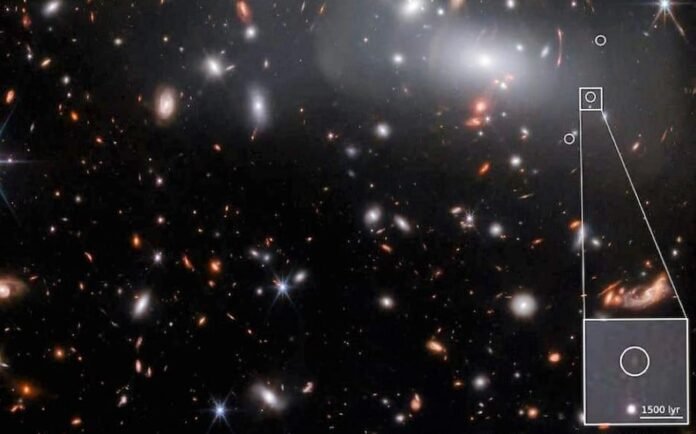Astounding Revelation
In a breakthrough moment, scientists have uncovered a minuscule galaxy that boasts immense star power. Utilizing the James Webb Space Telescope (JWST), the world’s most advanced telescope, these trailblazing astronomers made first-of-its-kind observations by peering over 13 billion years into the past. A unique galaxy that emerged around 500 million years following the Big Bang, it remarkably produces new stars at an extraordinary rate for its size. In fact, it is the smallest galaxy ever discovered at such a distance.
Implications that Matter
Investigating galaxies that existed when the universe was still young, provides profound insights into the past, and significantly informs the present. This revolutionary revelation could offer astronomers a wealth of knowledge about the galaxies that formed shortly after the universe’s creation. It can provide greater insight into the features of these primordial galaxies, how they differed from the galaxies that exist today, and how these earlier galaxies took shape.
The Eureka Moment and Views from Experts
Patrick Kelly, senior author of the paper and an assistant professor at the University of Minnesota School of Physics and Astronomy, expressed that this distant galaxy is inaccessible to all telescopes except the James Webb. These initial observations of the far-off galaxy are nothing short of spectacular. Hayley Williams, first author on the paper and a PhD student at the Minnesota Institute for Astrophysics, highlights that the early galaxies were remarkably different from what we see today in the nearby universe.
The Unconventional Discovery Method
This groundbreaking discovery was facilitated by gravitational lensing, a rare phenomenon where the gravity of a galaxy cluster lenses the light of a more distant background galaxy. In this case, the small galaxy was made to appear twenty times brighter than it would have been without this gravitational magnification.
Where the Findings Are Found
University of Minnesota researchers were among the first teams to examine a distant galaxy through the JWST, and their findings will be among the first-ever published. The paper, which is published in the Science journal, will unquestionably pave the way for more discoveries about the formation and evolution of galaxies in the early universe.











